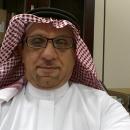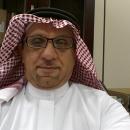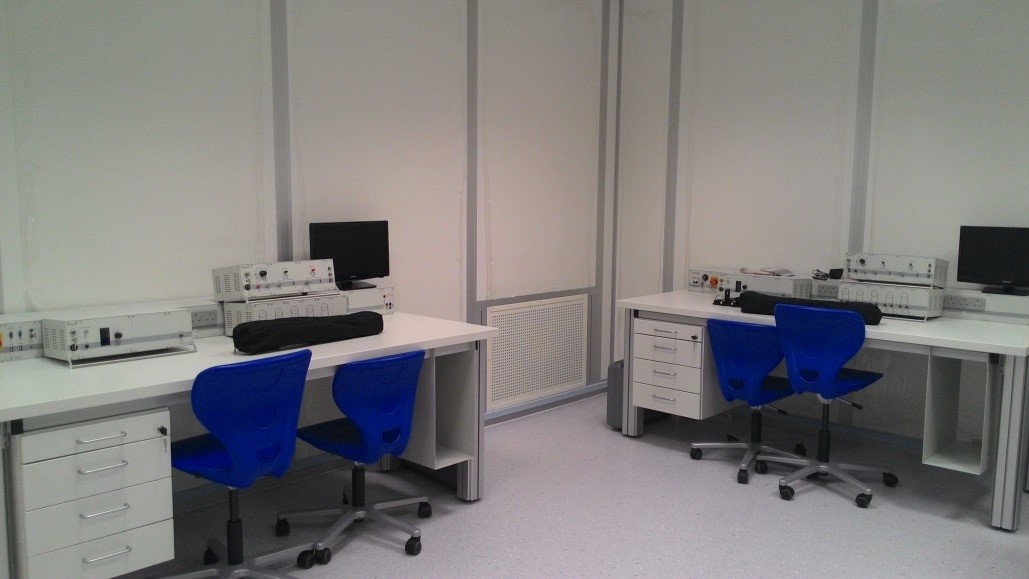Members_CHE
Accreditation Comittee Members
Pr. Emaddine Mustapha Kamal (Chair)
Pr. Abdulhamid Ajabar (Coordinator)
Members :
Pr. Ahmed Abasaeed Elhag
Dr. Abdelbasset Bessadok
Dr. Mohamed Gaily
Dr. Asif Mahmood
Dr. Salim Mokraoui
Accreditation Comittee Members
Pr. Emaddine Mustapha Kamal (Chair)
Pr. Abdulhamid Ajabar (Coordinator)
Members :
Pr. Ahmed Abasaeed Elhag
Dr. Abdelbasset Bessadok
Dr. Mohamed Gaily
Dr. Asif Mahmood
Dr. Salim Mokraoui

Welcome to Industrial Engineering Department website, Faculty of Engineering, King Saud University
The Department of Industrial Engineering offers three different programs in three different tracks to cope up of modern scientific and industrial progress and serve the requirements of the market needs in the Kingdom of Saudi Arabia, the department has three principle tracks: Manufacturing Systems Engineering and Technologies, Industrial Systems Engineering and Human Factors Engineering. The teaching programs are: Bachelor's program, and two postgraduate programs (Masters and Philosophy of Doctorate), the postgraduate programs cover the principle tracks mentioned earlier. The department team group are a qualified professors teach the three programs. Furthermore, the department has many modern laboratories, machines and up-to-date computer software. The department has a strong relationship with the Advanced Manufacturing Institute enriching relevant knowledge, and expanding research in the fields of industrial engineering. All this stimulates and creates an environment suitable for faculty members and students in the department of excellence and creativity.
I invite you to explore our homepage and contact me if you have any questions or comments.
Chairman of Industrial Engineering

Welcome to Industrial Engineering Department (IED) website, Faculty of Engineering, King Saud University
Whether you want to improve the world of manufacturing, services or logistic systems, IED has programs that lead you to your goals. In manufacturing systems, you will gain knowledge and skills to increase product quality for consumer, increase the profit by decreasing wastes and eliminating unnecessary processes, and ensure the safety of workers. In services and logistic systems, you will learn professional optimization, evaluation, and simulation tools to speed up and upgrade the services provided by reducing the delivery and service times, eliminating unnecessary operations, and decreasing waiting times and queue lines.
Since the IED is established in the year 1403H (1983 G), we, in IED, always taken pride in providing Saudi market with highly educated intellectuals and professionals whom hold key positions in all governmental and private sectors. We have well-known faculties, world-class courses, highly equipped laboratories, best students, and successful alumni. IED faculties are carrying out a broad range of research projects funded by public agencies and private sectors. In addition, IED has a strong collaboration with the Advanced Manufacturing Institute that enriches the frontiers of the relevant knowledge and extends the research of the IE areas. All of this provides an intellectually stimulating broad and rewarding environment for faculty, staff, and students to a simultaneously meet the goals of the 2030 vision and strategic goals of both the colleague of engineering and the university.
IED offers several programs for undergraduate, graduate, and professional studies. At the undergraduate level, it offers B.Sc. in Industrial Engineering. At the graduate level, the IED has M.Sc. and Ph.D. in three different tracks; Manufacturing Systems Engineering, Industrial Systems Engineering, and Human Factors Systems Engineering. In addition, the IED offers H.D. in Occupational Safety Engineering.
I invite you to explore our homepage and contact me if you have any questions.
Chairman of Industrial Engineering
Providing a publishing facility for researchers in engineering fields and spreading engineering knowledge globally.
Publishing a distinguished research in the field of engineering sciences and new engineering developments
The journal should be a pioneer in the field of scientific publishing specialized in engineering sciences
Journal of King Saud University – Engineering Science is a peer-review journal that is listed now in SCOPUS indexing. The journal used to be published by "King Saud University Press" in two issues per year. From 2011G the journal was hosted and published by the international publisher “Elsevier“and become online on Science direct. Starting in 2019G, the journal published Eight Issues Per year. The journal publishes all articles in all engineering and related fields.
I would like to thank all Authors and reviewers who contribute to the journal from King Saud University or outside. The journal welcomes your valuable suggestions/Comments any time regarding the performance of the journal.
LABORATORY EQUIPMENT
|
Laboratory |
Equipment |
|
Electronics Circuit Laboratory |
Oscilloscope Function Generator Three-phase Transformer DC Power supply Variable AC power supply Digital Wattmeter Digital Multimeters |
|
Optical Communications Lab
|
Oscilloscope. Optical Spectrum Analyzer. Optical Power Meter, Fiber Splice machine |
|
Electrical Machine lab |
DC separately excited machines DC series machines DC shunt machines Universal motors Linear motors AC single phase split phase induction motors AC single phase capacitor-start-capacitor-run induction motors AC three phase induction machines – wound rotors AC three phase induction machines – cage rotors Three phase synchronous machines Facilities for parallel operations of synchronous generators Magnetic powder brakes (Torque units) Different types of electrical loads- resistive, inductive, and capacitive loads. Modern oscilloscopes Twelve modern designed experimental benches with flexible instruments positioning. Single and three phase transformers Single and three phase variable transformers DC and AC supplies Universal inverters for drives Data acquisition and control interface for computer simulations. Thyristors, diodes, triacs, single phase and three phase firing circuits. Data show for seminars, trainings and presentations. A library of students research projects. Modern analog and digital measuring instruments such as ammeters, voltmeters, wattmeters, and multimeters. |
|
Communication Lab |
Oscilloscope Analog and Digital, Power Supply, Function Generator , Multimarer analog And Digital, volt Analog and Digital Communication Training Systems From LD |
|
Microwave Lab |
Network Analyser upto 145GHz, Time domain radiation pattern measurements upto 18GHz, anechoic chamber till 18GHz, Frequency Counter, Spectrum Analyzer, RF Generator, SWR Meter, Power meter, Optical power meter, different set of educational set - Microwave, Antenna. |
|
Microprocessor/Microcontroller Lab |
24 PC’s Dell Pentium 4 (Win 7 32 bit), 18 Flight 86 (CPU 8086) Hardware kits, 40 Microcontroller Training Sets, 40 Breadboards, 12 PC Based Logic Analyzer LA1132P, 17 Pic24HJ128GP502 Microcontroller kits |
|
High voltage |
A.C. power frequency test equipment 200 kV Impulse voltage generator 1000 kV, 40 kJ D.C. supply 100 kV Partial discharge detection system Schering Bridge for measuring of capacitance and tan delta |
|
Electronics Lab Equipment
|
Analog Oscilloscopes Digital Oscilloscopes Signal generators Power Supplies Hand-held Digital Multimeters Bench Digital Multimeters Center-tapped transformers Curve Tracers LCR meters Resistance Decade Boxes Capacitance Decade Boxes Welding Kits Solderless Breadboards Rastered Socket Panels Various Training Kits Various electronic components (ICs, BJTs, MOSFETs, Diodes, Resistors, Capacitors, Inductors, etc.) Personal Computers loaded with software for electronic circuits simulation
|
|
Automatic Control Laboratory (Control and Instrumentation Laboratory)
|
TPS Panels conveyor system Sensors kit Sensors modules Microcontroller kit Ni ELVIS 100 Ms/S Ni data acquisition system QNET DC Motor CONTROL Trainer Measurements panels PLC Function generators Multimeters Computer device with LCD Motnitor Speaker Printers Scanners |
|
Power Simulator Lab |
Electrical Power System Simulator Model TQ 2970 made in UK. PTI Software PSCAD Software ETAP Workstation RTP Signal Generator Equipment Relay Testing Equipment |
|
SAR Assessment Lab(Research Lab) |
The lab is used to characterize the human exposure to electromagnetic fields. Specific absorption rate SAR is measured in SAM phantoms. A robotic arm is used to scan the field probe. Human tissue simulating liquids are used in the analysis |
OPTICAL COMMUNICATIONS LABORATORY

Lab Description:
This is a new under-construction laboratory that will be equipped with advanced modern equipment in order for teaching and advanced research in the field of Light wave Technology and Optical Communication networks.
Undergraduate students will be served by this laboratory in different courses including Optoelectronics and Communication systems in addition to their senior gradation projects in the field of optical fiber communications and technologies.
This new lab is also intended to provide an appropriate environment for Master and PhD candidates in advanced fiber optic communication systems and subsystems. This includes Fiber-to-the-Home, Wavelength division multiplexing, Optical code division Multiplexing, next generation ultra-high speed and all-optical TDM and Ethernet technologies.